DHQ: Digital Humanities Quarterly
2015
Volume 9 Number 4
Volume 9 Number 4
Materiality Comics
Abstract
Materiality Comics is a digital comic produced with a combination of Bitstrips and Comic Life. It argues and visually demonstrates that materiality is an important topic for comics scholars to consider, and that through creating essays in comics form, comics scholars can develop insights about materiality that are unavailable when analyzing comics by others.
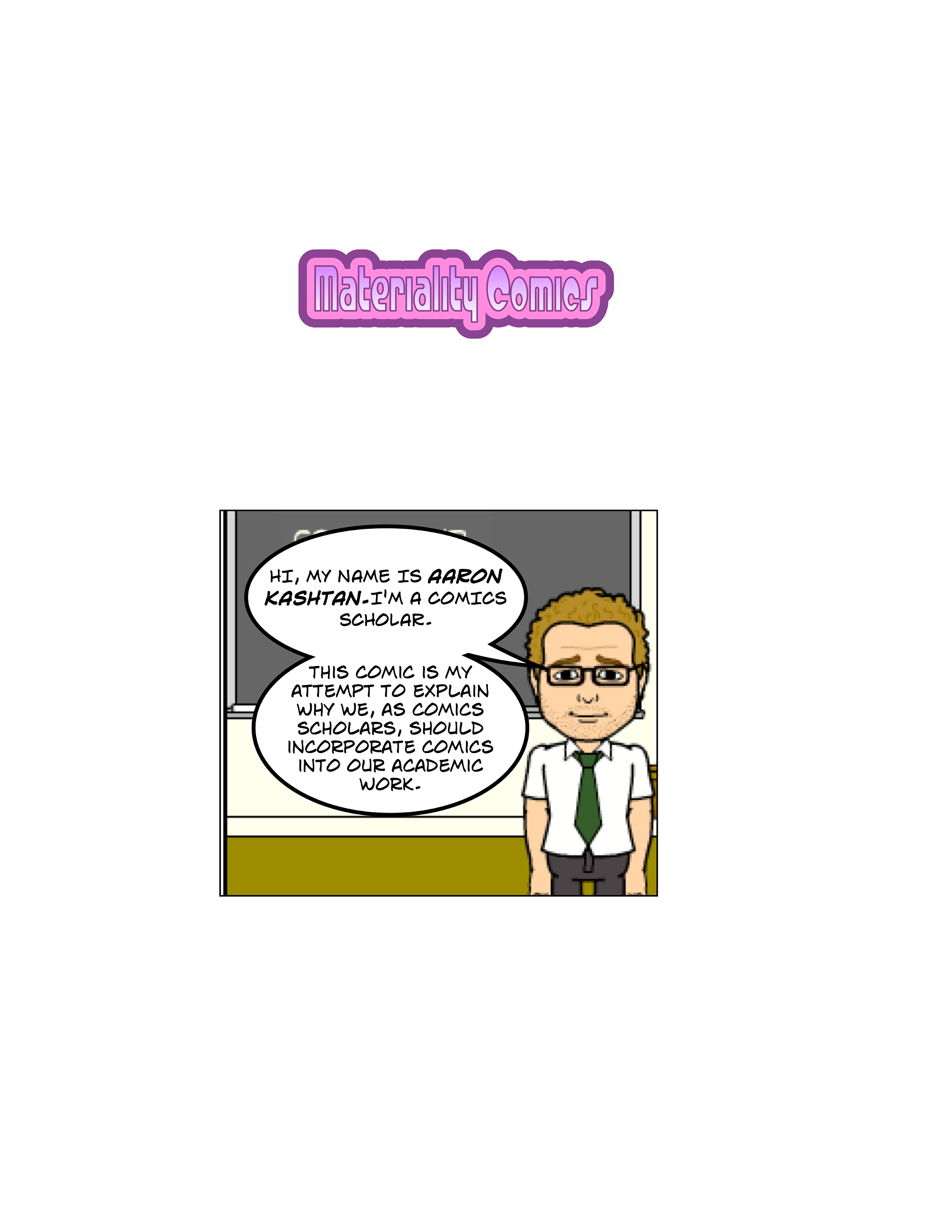
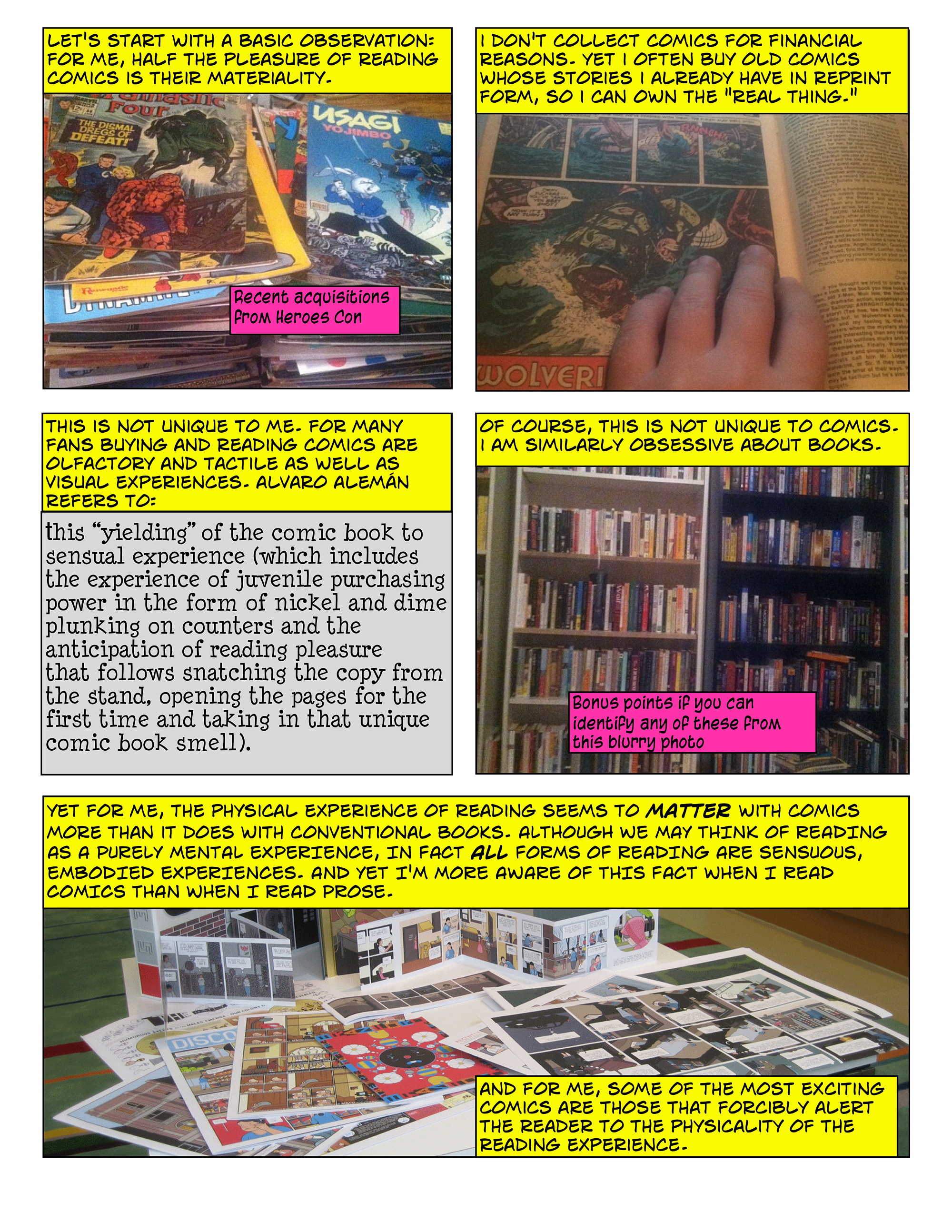
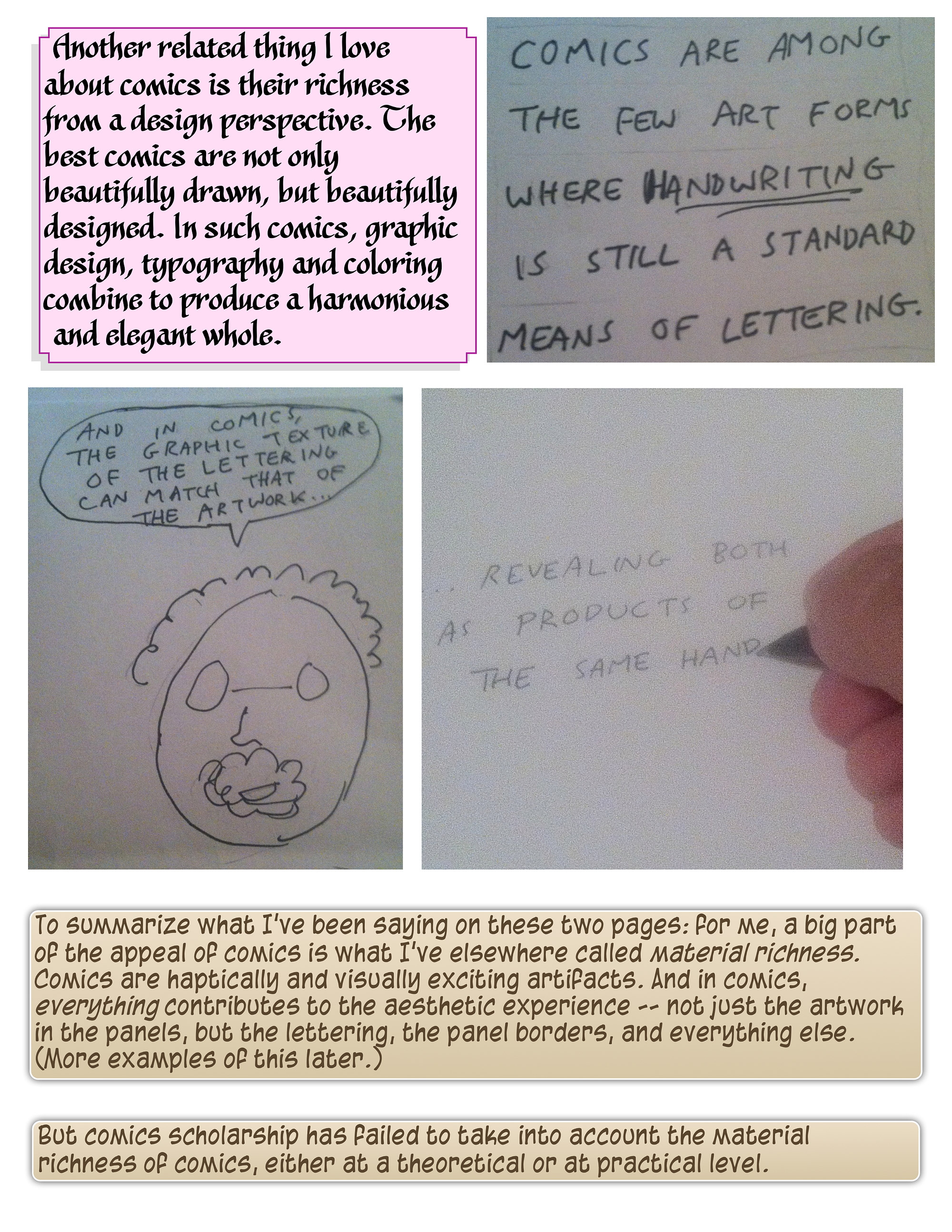
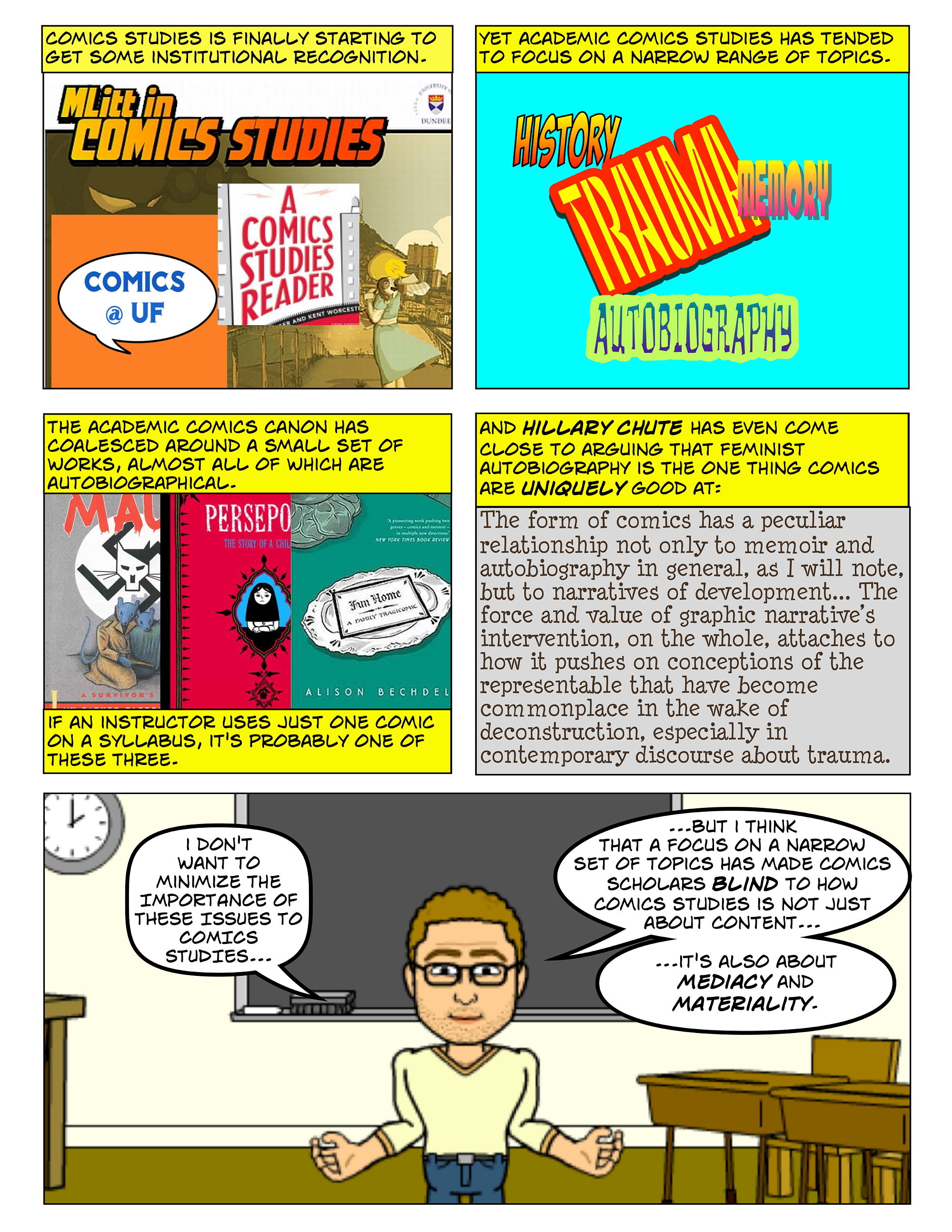
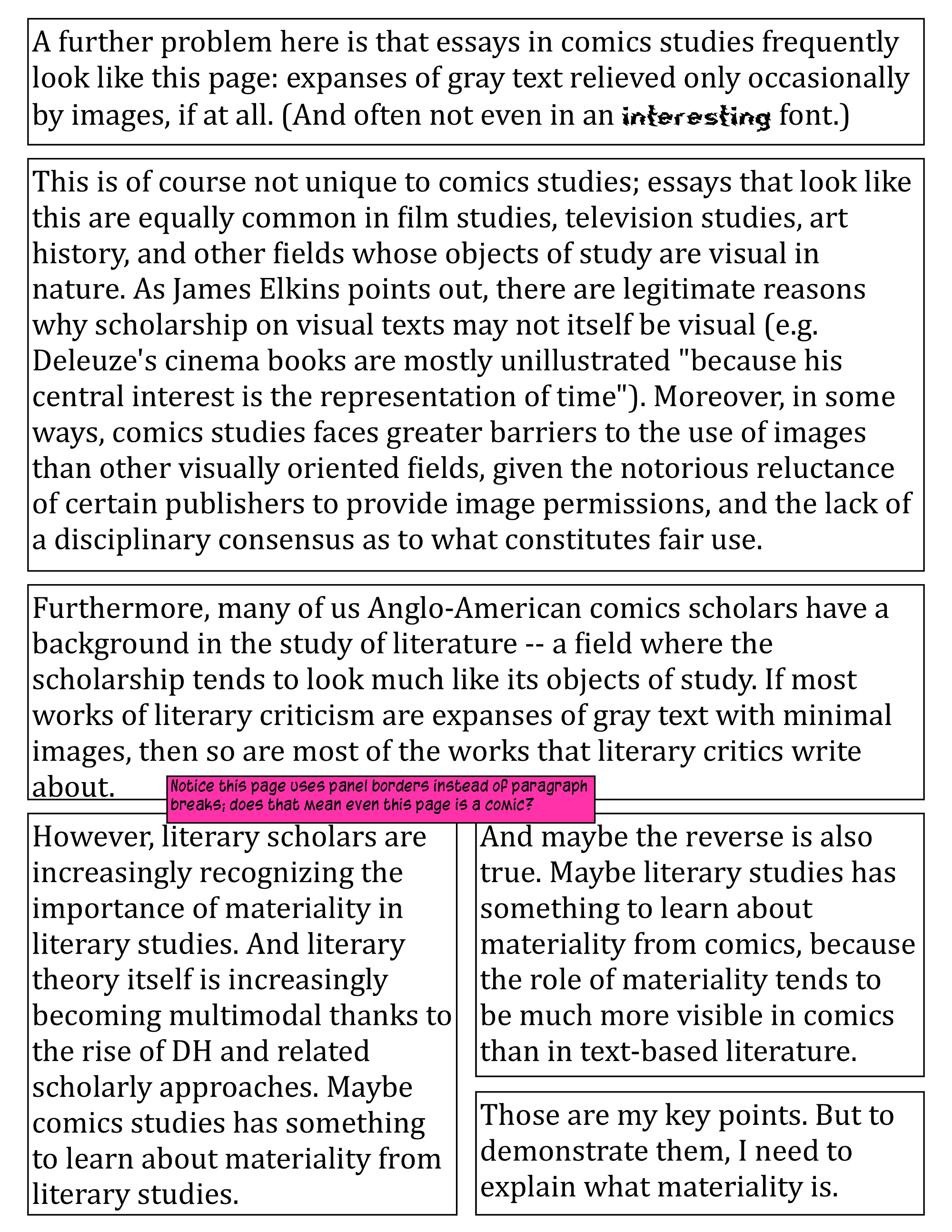
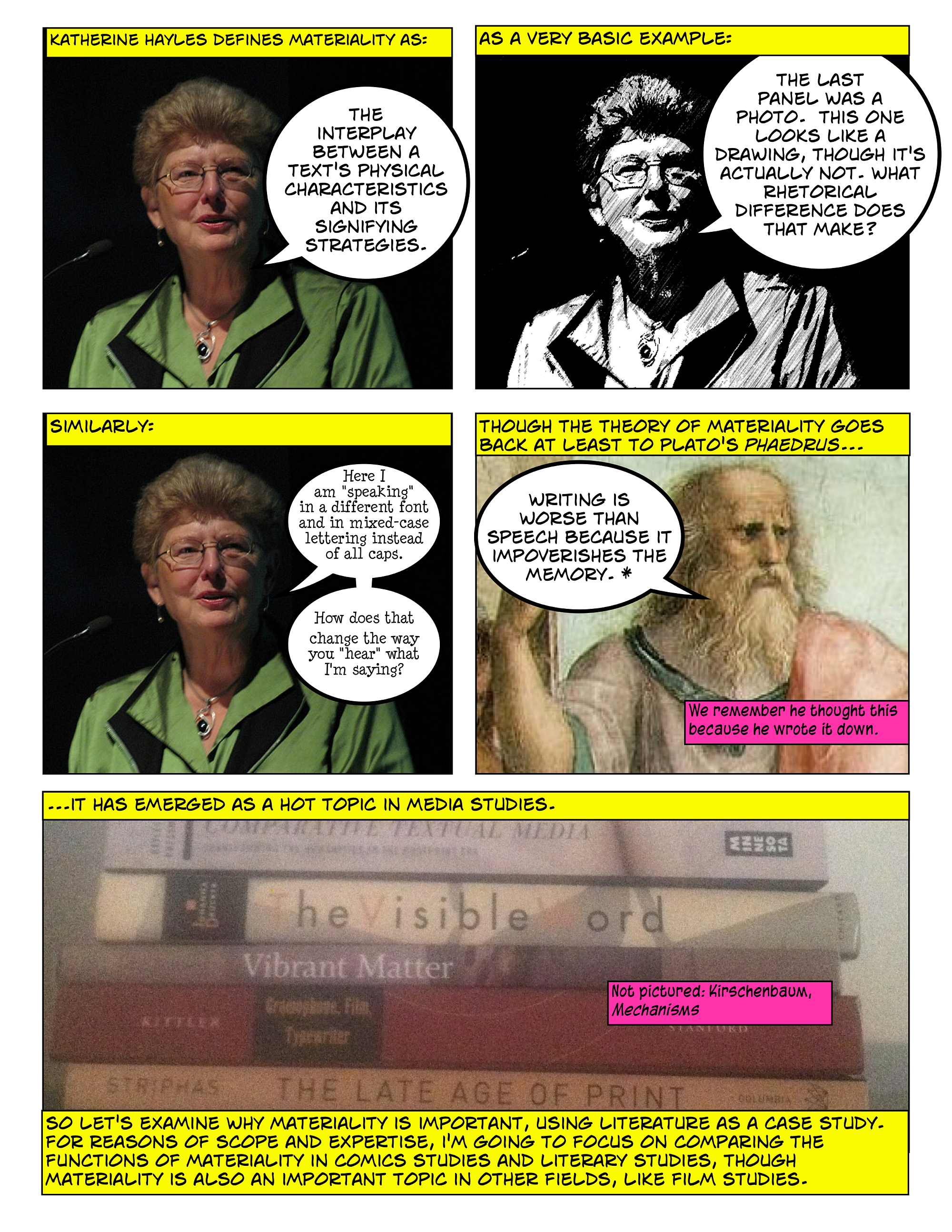
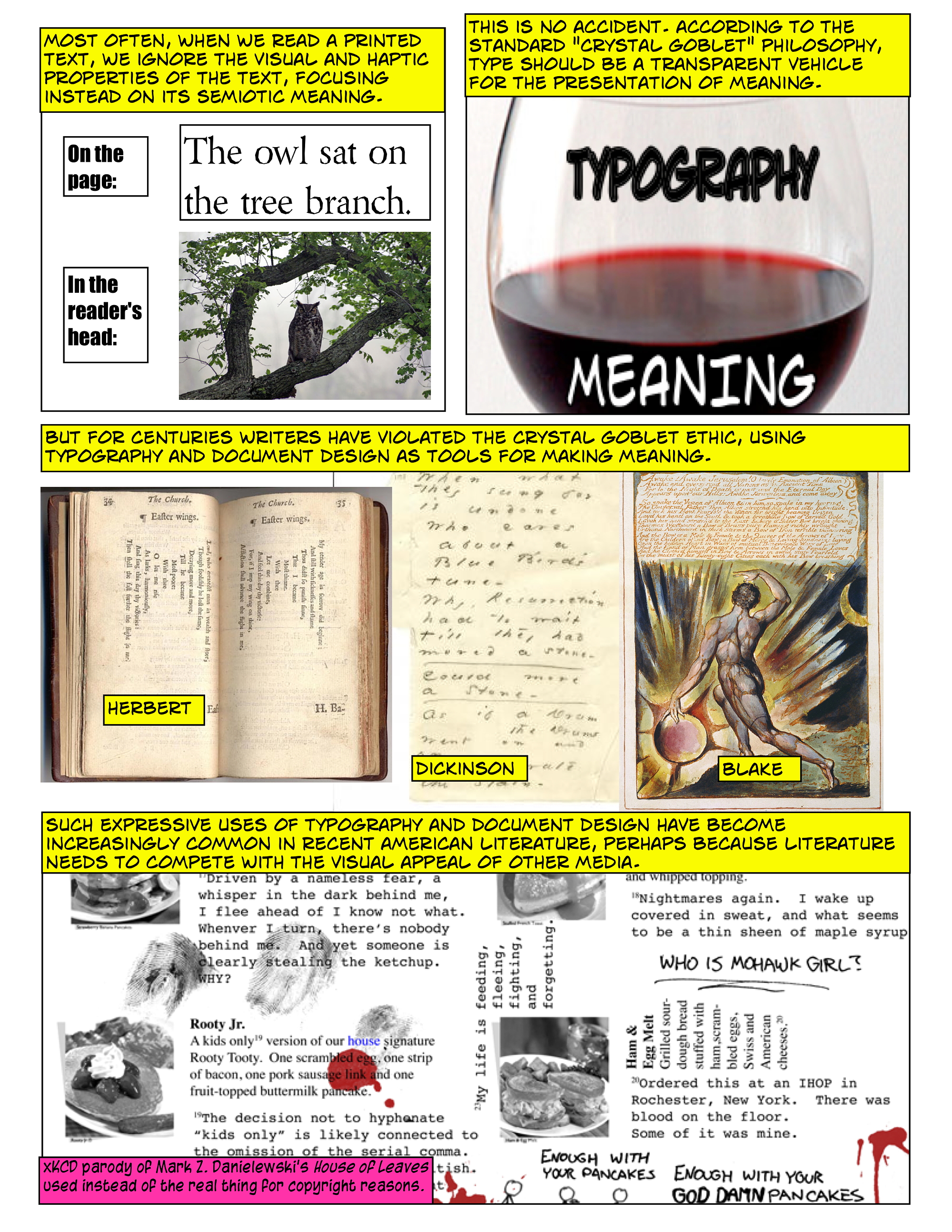
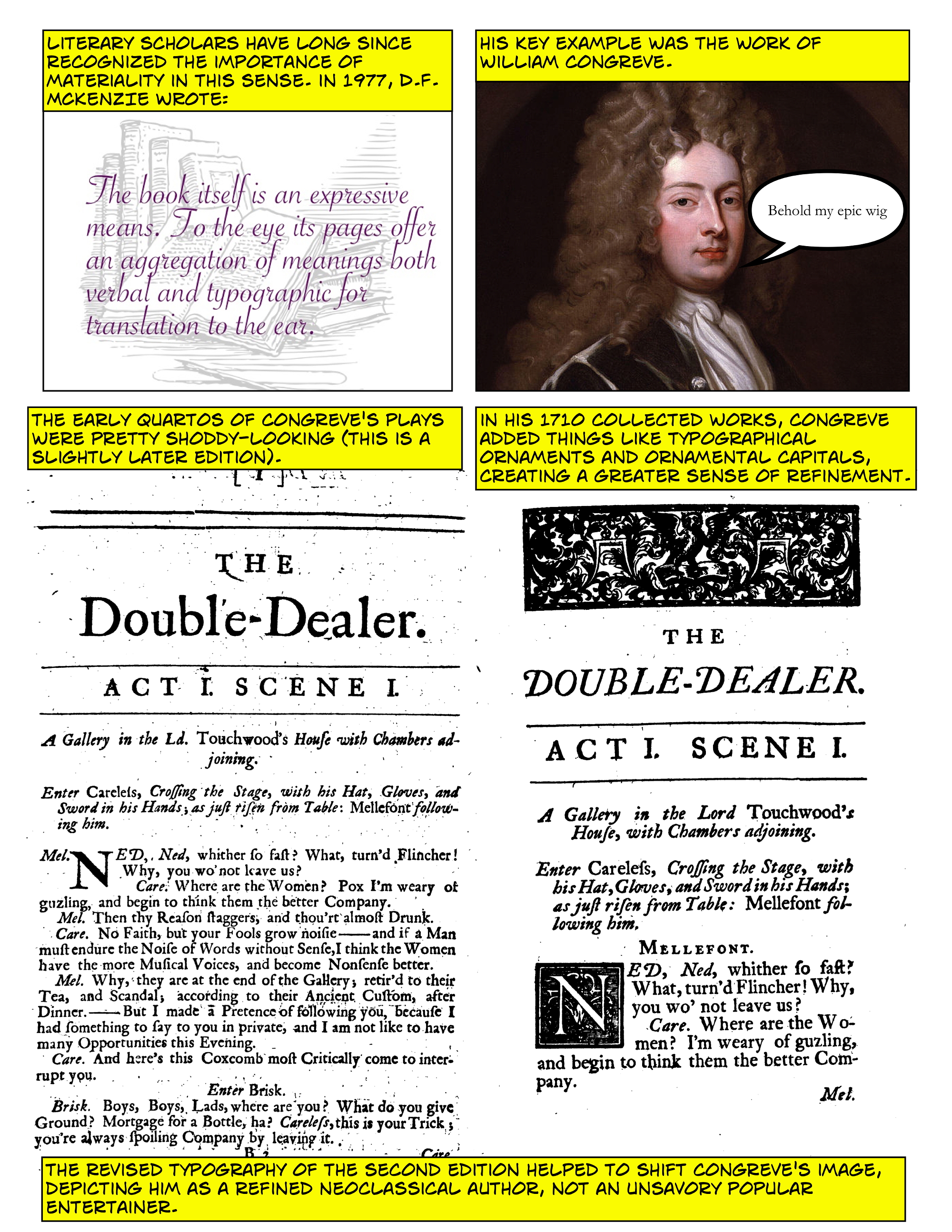




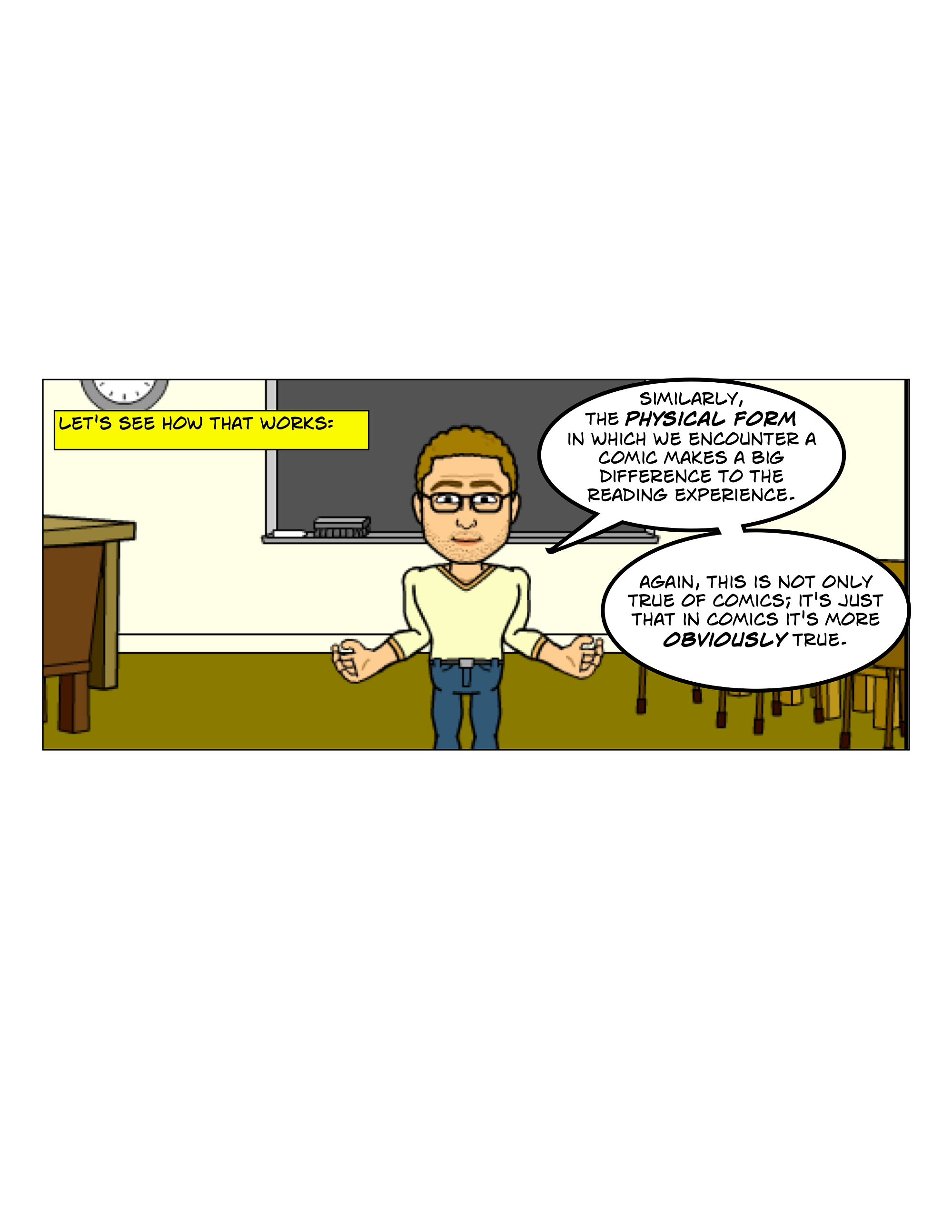
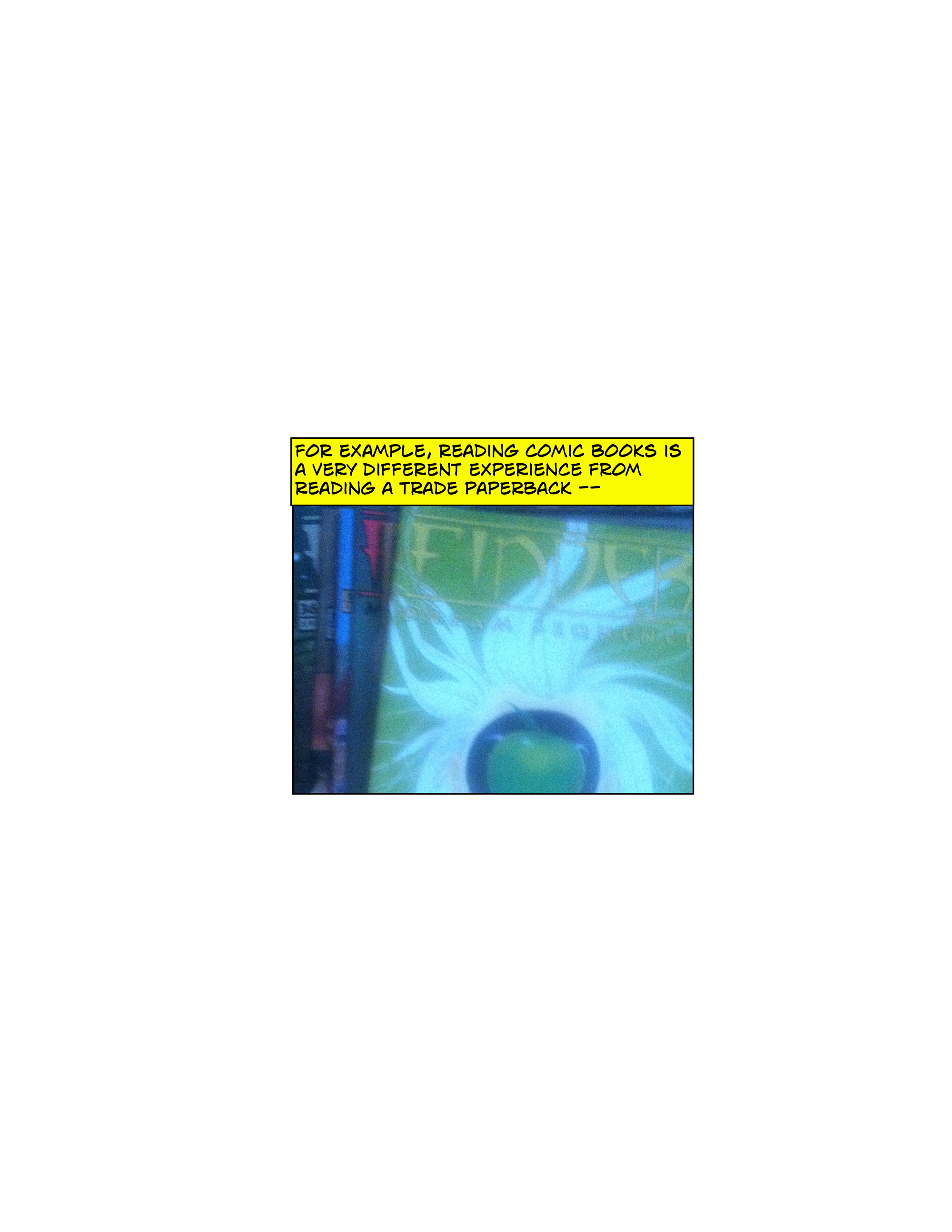
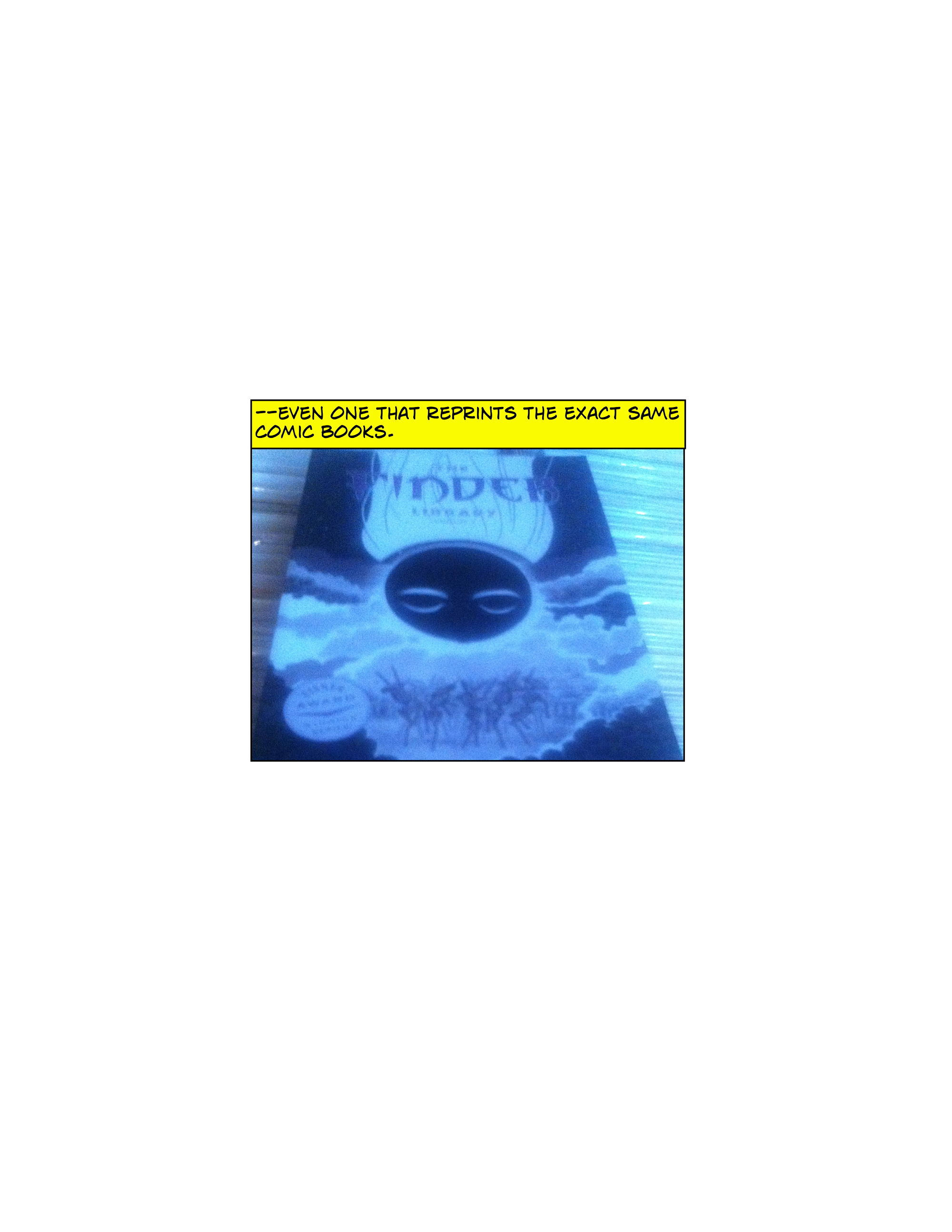
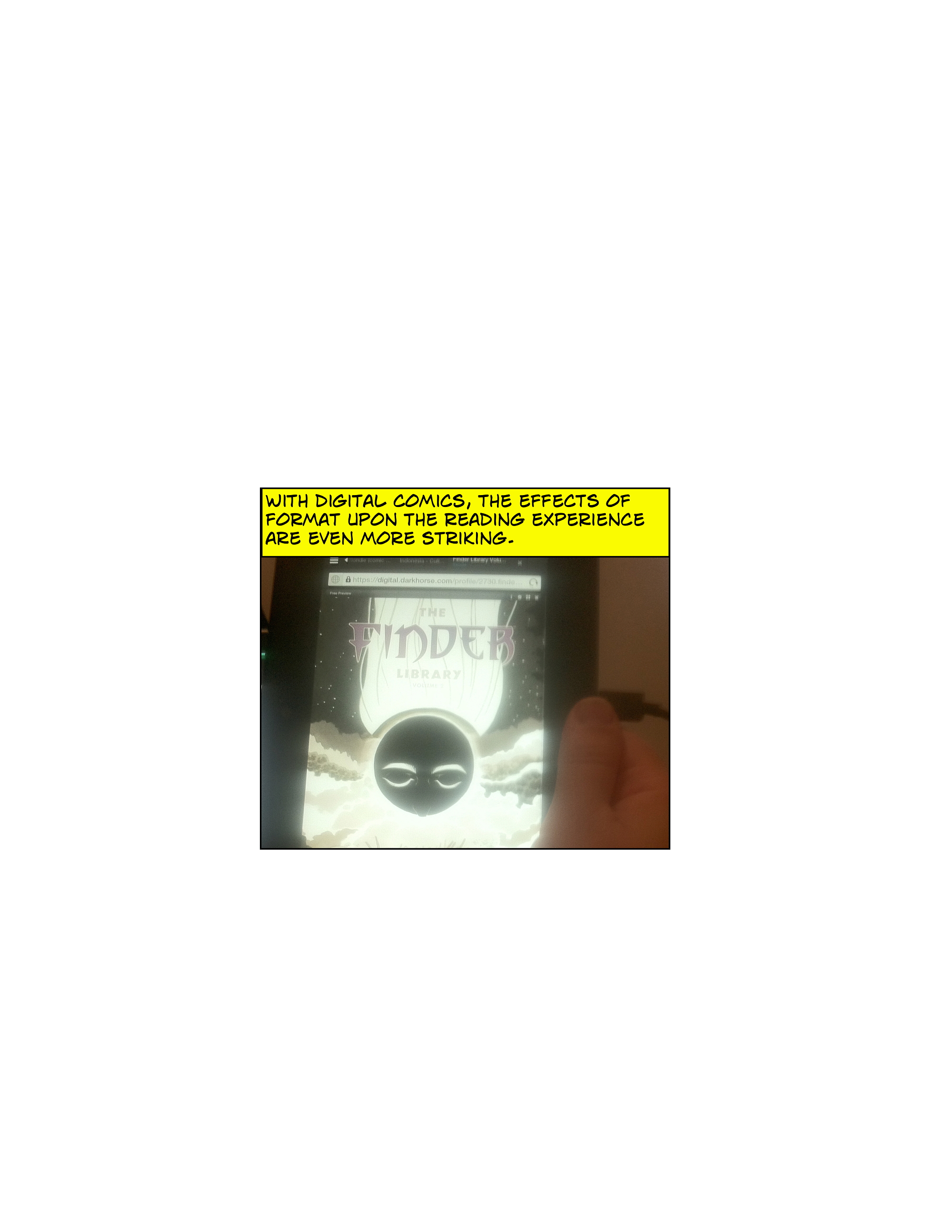
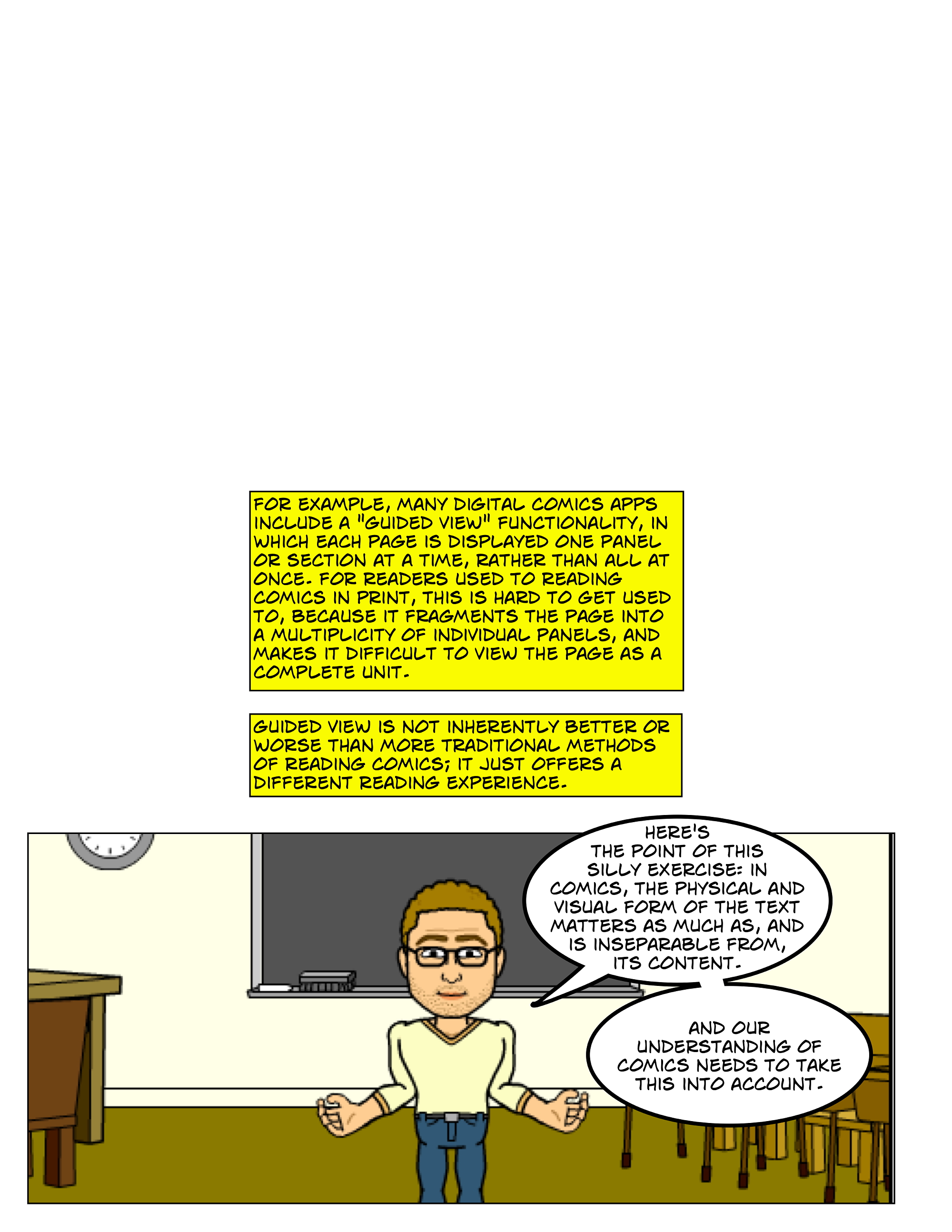
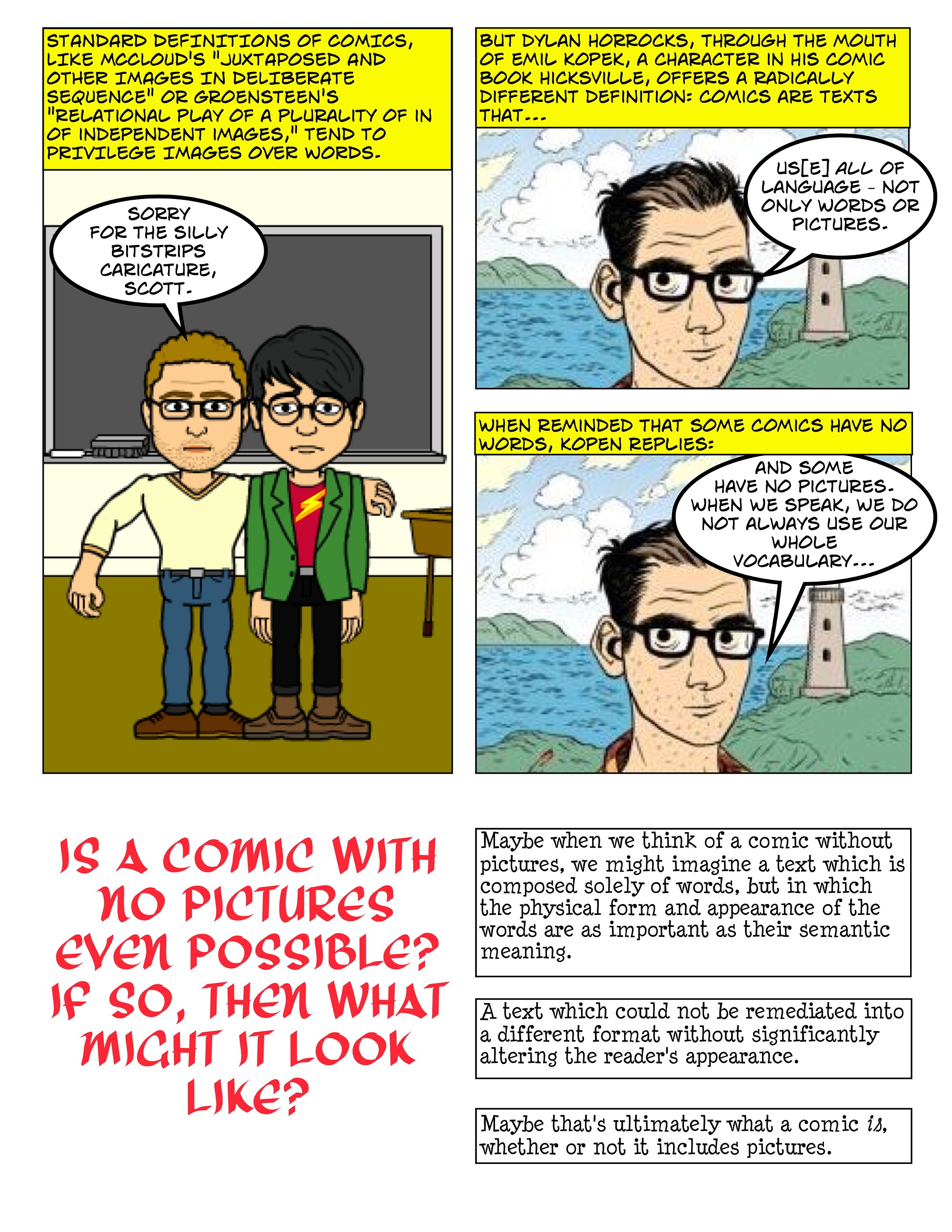

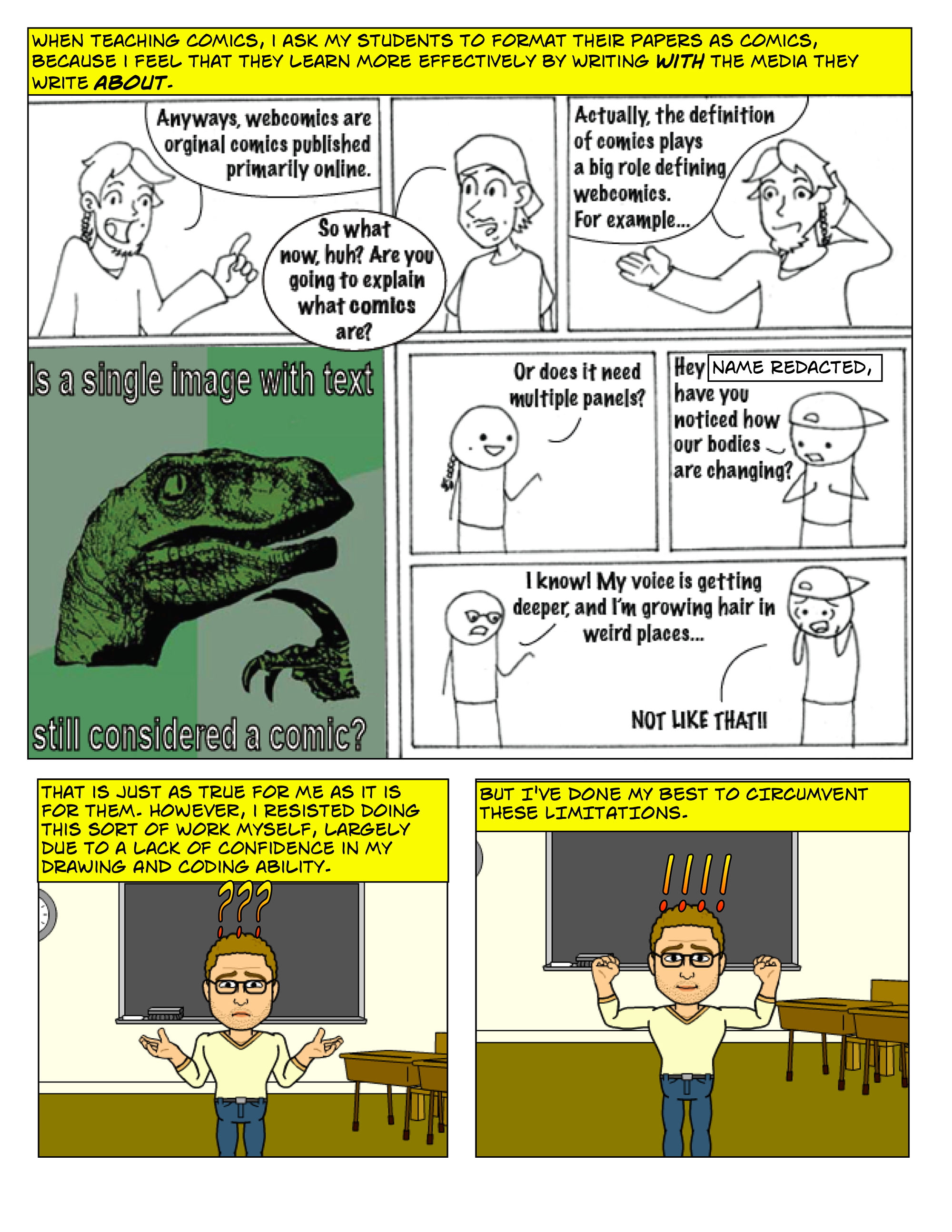
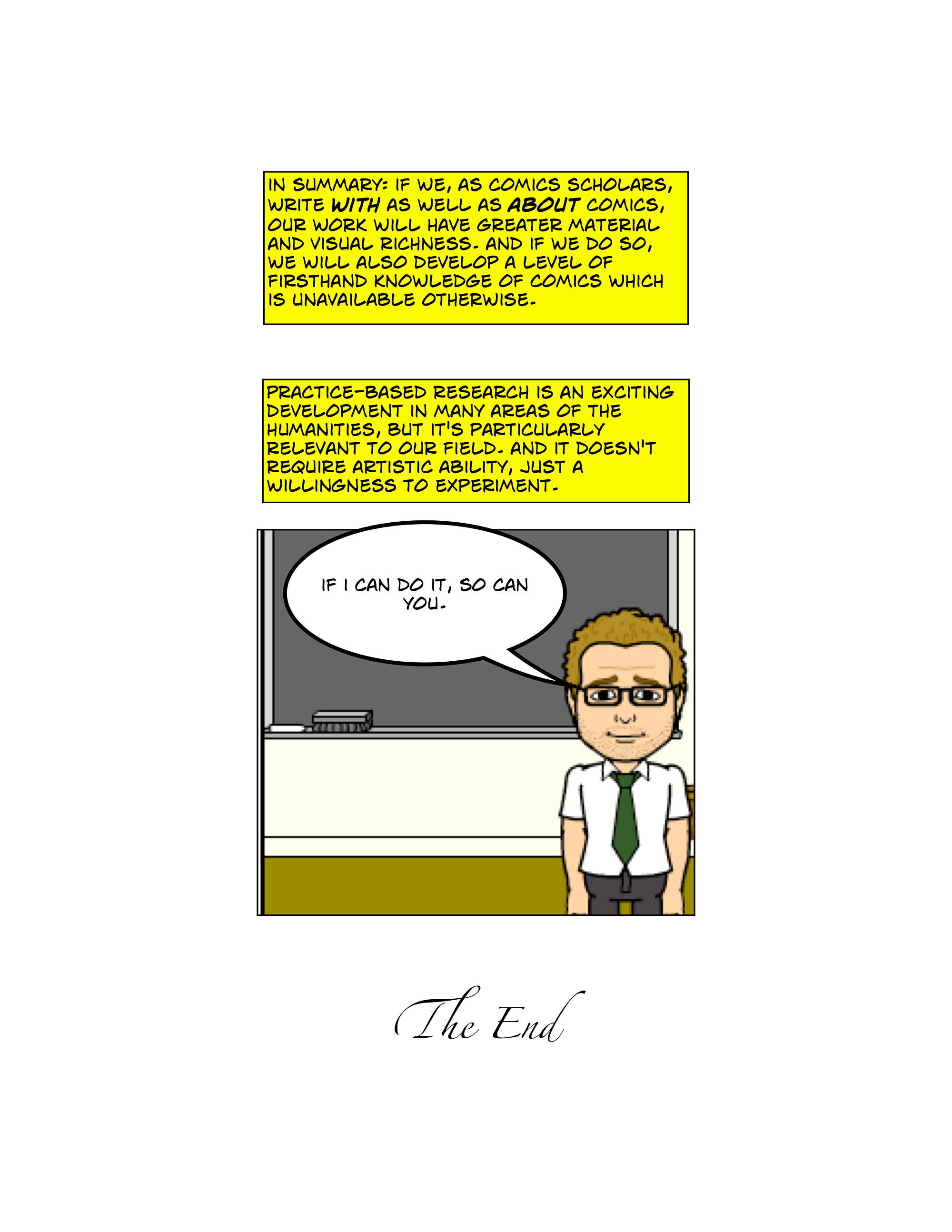
Creator's Statement
This was one of the hardest academic projects of my career. I am neither a trained
artist nor a trained programmer, and by far the greatest obstacle I faced in starting
this project was my own lack of confidence. Now I understand how my students feel when I
ask them to write essays in comic or game form. Nonetheless, I feel not only amazed that
I finished this project, but also proud of how it turned out.
Nonetheless, I was excited to do this project because it gave me an answer to the
question of how digital humanities – or practice-based research, or critical making –
could be made to work for me. As a Brittain Fellow at Georgia Tech, I saw my colleagues
doing complicated-sounding things like corpus analysis and visualization and distant
reading, and as a scholar whose work focuses on comics rather than the sorts of texts
usually analyzed with DH methods, I didn’t see how these methods were relevant to my
work. One inspiration for this project, therefore, was to use comics to do
practice-based digital research, and to implicitly argue that comics could be an
effective means of conducting such research. Most of my theoretical arguments on this
point did not survive into the final draft, yet “Materiality Comics” is still influenced
by my conviction that making comics is an effective means of theorizing comics. It
therefore connects with the recent exciting work done in this area by scholars like Nick
Sousanis, Jason Helms and Jarod Roselló.
My specific goal in this project was to demonstrate that materiality is a useful rubric
for theorizing comics, and that making comics can be an effective way of experimenting
with and learning about materiality. This argument is explicitly stated in the captions
and word balloons, but is also visually demonstrated by the wide range of visual
materials included in the comic, ranging from hand drawings to photographs to public
domain images from the Internet. (An important parenthetical note here is that my goal
throughout was to make this comic visually interesting
as a comic. Previous drafts included a large
number of panels that just depicted my Bitstrips avatar standing in front of a classroom
and lecturing. In the final draft, I sought to reduce the number of such panels as much
as possible, and to make each panel visually interesting.) I also sought to demonstrate
that comics can explore questions of materiality through their verbal as well as their
visual content. Inspired by my scholarly interests in typography and handwriting, I used
as many different typographic styles as possible, and even included one page which
consists only of text, yet nonetheless
“counts” as a comic because its text blocks are juxtaposed to each other in a sequential
fashion. I thus seek to demostrate that text in comics matters not just because of what
it says but also because of what it looks like, and that for this reason, comics can
guide our interpretation of other text-based media. In this regard, “Materiality Comics”
takes inspiration from other recent work on the visual and material properties of text,
such as Lori Emerson’s
Reading Writing Interfaces and Katherine
Hayles and Jessica Pressman’s edited collection
Comparative Textual Media.
The process by which this work was created is also proof of its argument that making
comics is an effective way of learning about materiality. I chose to create this comic
digitally both because of its DH focus and because given my lack of drawing ability or
experience, completing a 20-page comic with pen and paper was out of the question. (For
similar reasons, I typically offer my students the option to create longer comics
projects with Bitstrips or Pixton instead of by hand.) I initially considered executing
this project with Javascript or InDesign, but because of my lack of coding proficiency
and my unfamiliarity with the latter program, I ultimately created my project using a
combination of Bitstrips and Comic Life. The former is a free online comics creator tool
and the latter is a proprietary application for designing comics pages. Neither program
was sufficient on its own, because Bitstrips offers only rudimentary support for
designing unique page layouts and has a limited repertory of fonts, while Comic Life
only allows preexisting images to be imported and does not contain its own facilities
for creating images. Therefore, creating “Materiality Comics” was an exercise in
bricolage, in which I designed panels in Bitstrips or took photos with my phone, then
imported them into Comic Life. In the process I learned much about the constraints and
affordances of both programs. For example, it was surprisingly difficult to get images
in Comic Life to display at both the correct size and the correct aspect ratio,
and determining the correct size for the panel gutters required painstaking trial and
error. This is exactly the sort of insight that, as I argue in the essay (19.4), is only
available when we make comics ourselves rather than analyzing comics created by others.
By making our own comics, we as comics scholars can learn about the medium from a
practical perspective, and these practical insights can inform our theorization of
comics. This, indeed, is precisely why I ask my students to do projects in comics form,
and I feel proud that I have finally succeeded in making my research match my thinking.
Works Cited
Aleman 2005 2.3. Alvaro Aleman. “Paraliterary Immersion and the Puzzleform: An Essay in Social
Restitution,”
ImageTexT: Interdisciplinary Comics Studies 2.1
(2005), paragraph 12.
Binder 9.2. Page from “The Terrible Midge” from
Prize Comics #31, art by Jack Binder. Public
domain. Text courtesy of the Postmodernism Generator.
Building Stories 6.6. Photo of Building Stories from
http://g-ec2.images-amazon.com/images/G/01/Rando_Images/3L._V390906357_.gif.
Chute 2010 4.4. Hillary Chute. Graphic Women: Life Narrative and Contemporary
Comics (New York: Columbia University Press, 2010), 4.
Elkins 2003 5.2. James Elkins.
Visual Studies: A Skeptical Introduction (New
York: Routledge, 2003), 107.
Great Horned Owl 7.1. “Great Horned Owl” from
http://www.publicdomainpictures.net/view-image.php?image=25311&picture=great-horned-owl.
Public domain.
Hanks 9.3. Panel from Fletcher Hanks’s Fantomah story from Jungle Comics #15. Public domain.
Hayles 6.1. Photograph of Katherine Hayles from
http://en.wikipedia.org/wiki/N._Katherine_Hayles. Public domain.
Hayles 2004 6.1. Katherine Hayles, “Print Is Flat, Code Is Deep: The Importance of Media-Specific
Analysis,” Poetics Today 25.1 (2004), 67.
Horrocks 2014 18.2-3. Self-portrait of Dylan Horrocks from
http://www.mothcity.com/3-things-i-learnt-from-an-eisner-winner/. Quotation from
Dylan Horrocks, Hicksville (Montreal: Drawn
& Quarterly, 2014), n.p.
Kneller 8.2. Portrait of William Congreve by Godfrey Kneller. From
http://en.wikipedia.org/wiki/William_Congreve#/media/File:William_Congreve_by_Sir_Godfrey_Kneller,_Bt.jpg.
Public domain.
Martin 20.1. Excerpt from Francisco Martin, Aayush Sharma and Beruke Zeleke’s final project for
ENGL 1102 section B2 in spring 2013. Used with permission.
McKenzie 2002 8.1. D.F. McKenzie,
Making Meaning: “Printers of the Mind” and Other Essays (Amherst,
MA: University of Massachusetts Press, 2002), 200.
Munroe 7.4. xkcdstrip #472, “House of Pancakes,”
by Randall Munroe. https://xkcd.com/472/. Licensed under a Creative Commons
Attribution-NonCommercial 2.5 License.
Raphael 6.4. Detail of Raphael’s
The School of Athens. Public domain.
Valentine 9.4. Panel from Ryan Valentine’s redrawn version of the above at
http://www.theduckwebcomics.com/Public_Domain_Funnies/5139463/. Used with
permission.





